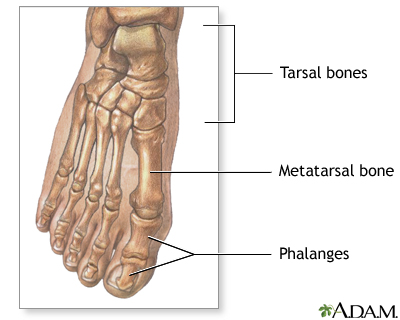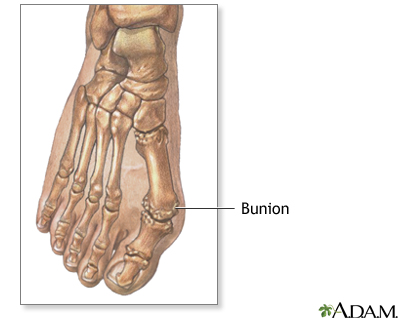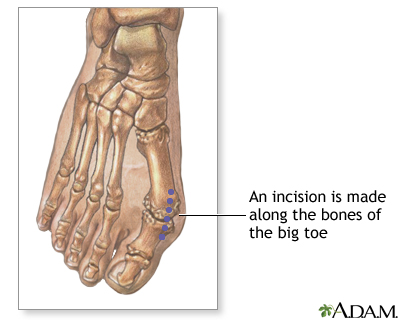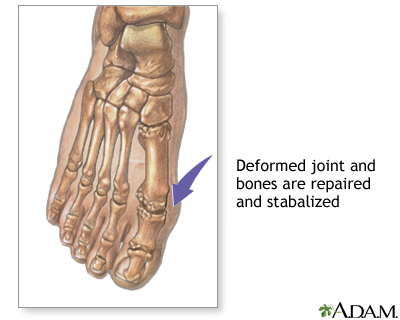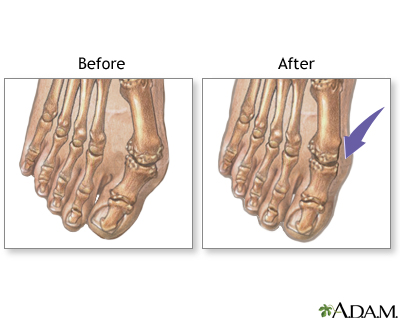Bunion removal
| Normal anatomy |
The foot is made up of tarsal bones, metatarsal bones and phalanges.
|
| Indications |
A bunion is a painful deformity of the bones and joint at the base of the big toe. Long-term irritation (chronic inflammation) from arthritis, poorly-fitting shoes, or inherited problems causes the joint to thicken and enlarge. This causes the bones of the big toe to angle toward and over the second toe, the foot bone (metatarsal) to angle out toward the inside of the foot, and the skin to thicken (callus formation).
|
| Procedure, part 1 |
Sometimes, surgery is recommended to correct the deformity, reconstruct the bones and joint, and restore normal, pain-free function.
|
| Procedure, part 2 |
Removal of a bunion is usually done while the patient is deeply asleep and pain-free (general anesthesia) and rarely requires a hospital stay. An incision is made along the bones of the big toe into the foot. The deformed joint and bones are repaired and the bones are stabilized with a pin or cast.
|
| Aftercare |
The patient is advised to keep the foot propped up and protected from pressure, weight, and injury while it heals. Complete recovery may require 3 - 5 weeks.
|

|
Review Date:
5/14/2012
Reviewed By:
Harvey Simon, MD, Editor-in-Chief, Associate Professor of Medicine, Harvard Medical School; Physician, Massachusetts General Hospital. |
The information provided herein should not be used during any medical emergency or for the diagnosis or treatment of any medical condition. A licensed medical professional should be consulted for diagnosis and treatment of any and all medical conditions. Links to other sites are provided for information only -- they do not constitute endorsements of those other sites. © 1997-
A.D.A.M., Inc. Any duplication or distribution of the information contained herein is strictly prohibited.



